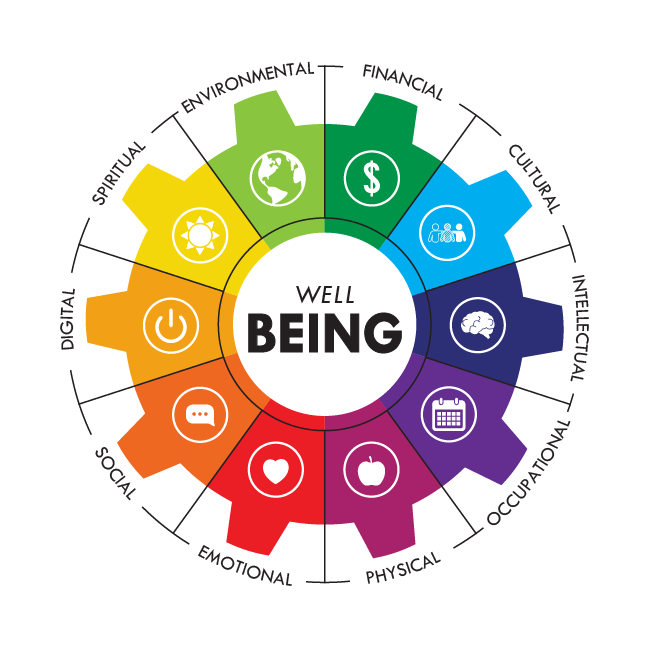THE DIMENSIONS OF WELLBEING
A HOLISTIC APPROACH
The Dimensions of Wellbeing is a holistic model utilized by many health and wellbeing professionals and organizations around the country. GatorWell is excited to employ this holistic model, adopted from the SAMHSA model, to support UF students in achieving academic and lifelong success.

A CLOSER LOOK AT THE DIMENSiONS
The model addresses various dimensions including physical, emotional, intellectual, spiritual, environmental, occupational, financial, cultural, social and digital wellness. Stress and anxiety, frequently cited obstacles to academic success, often result from neglecting these dimensions. The key to this model is maintaining balance among the dimensions. By assessing each dimension comprehensively, students can identify areas requiring attention and implement strategies for optimal wellbeing.
